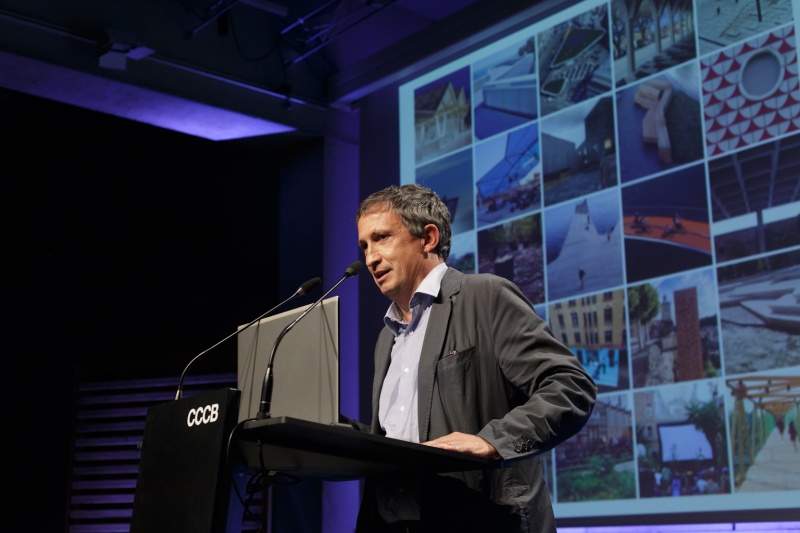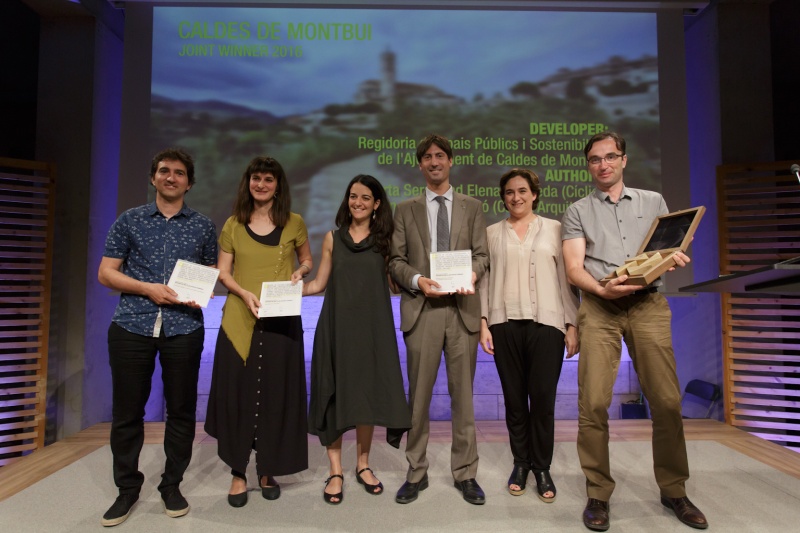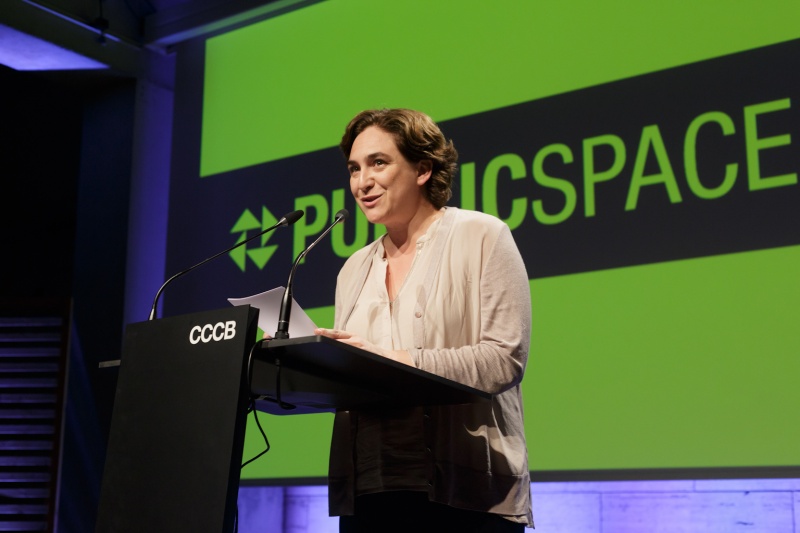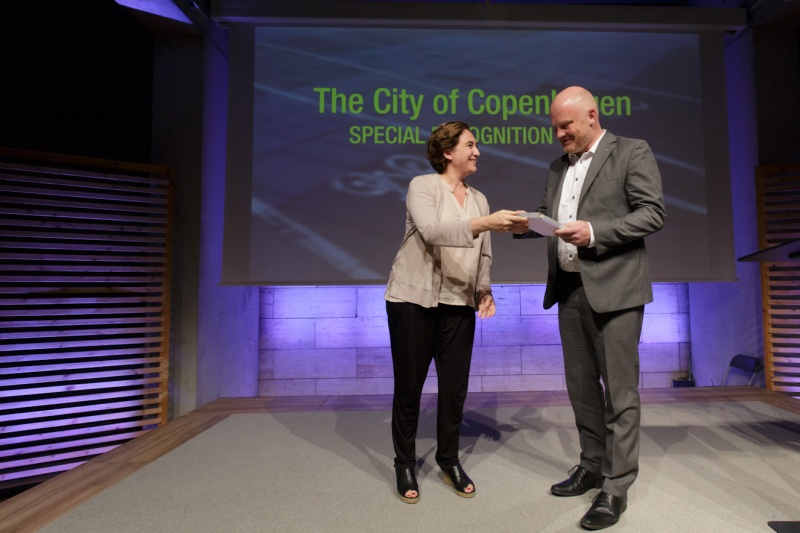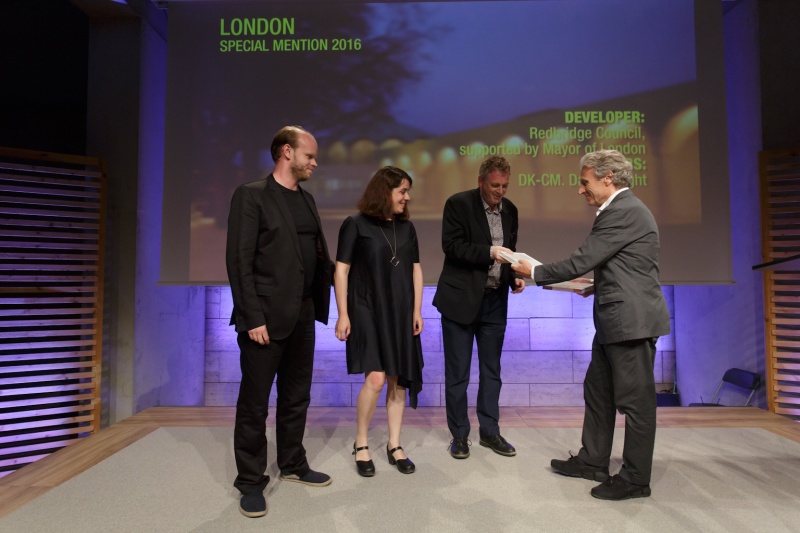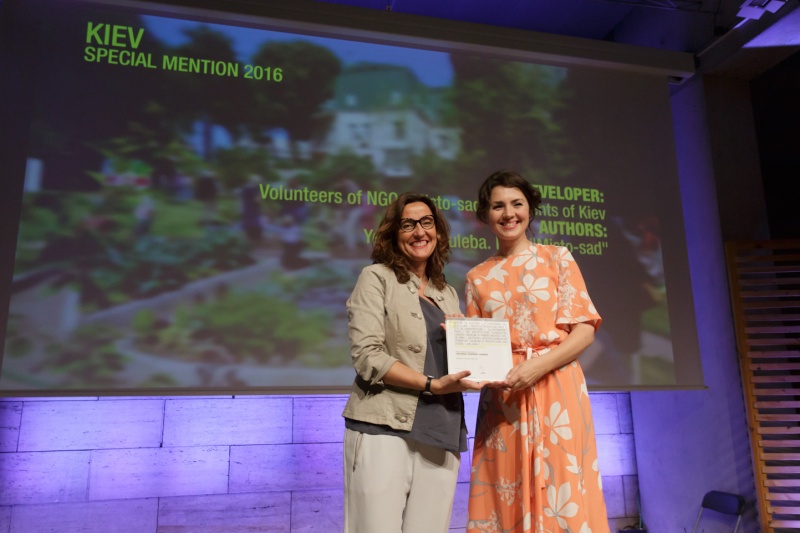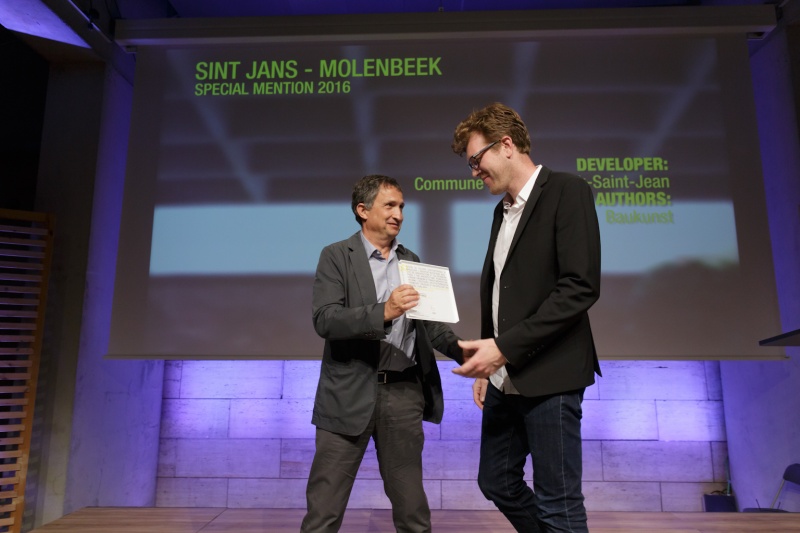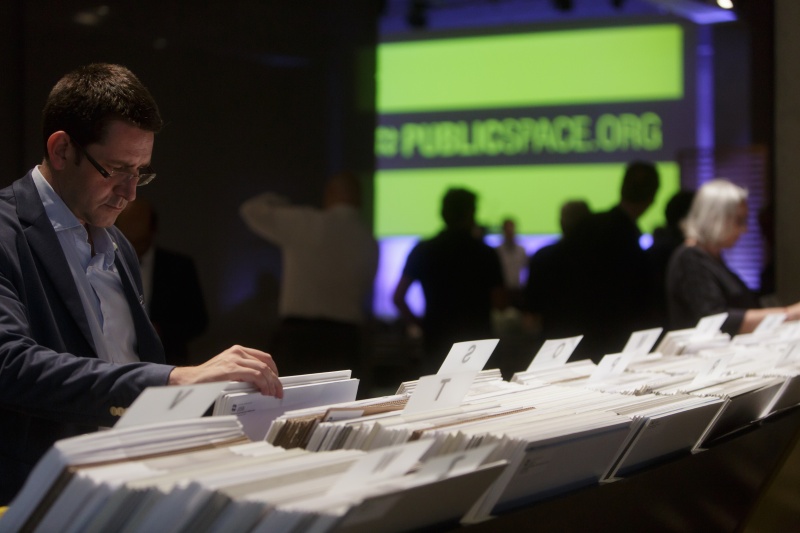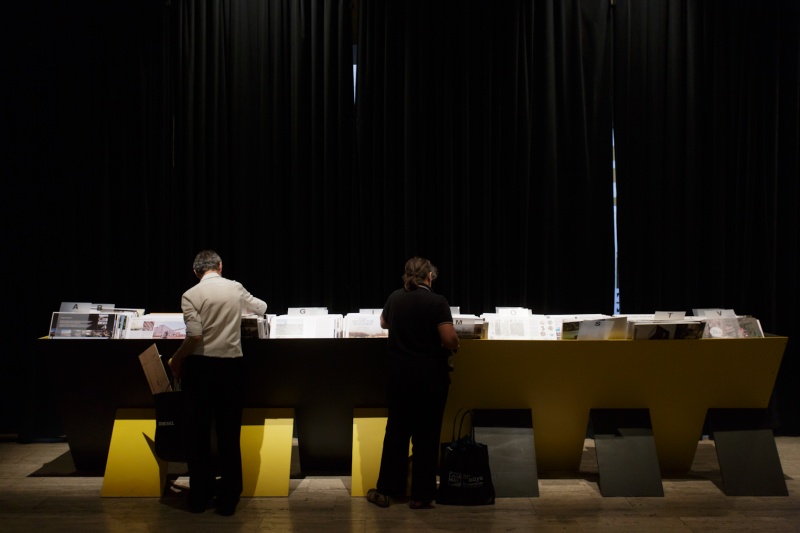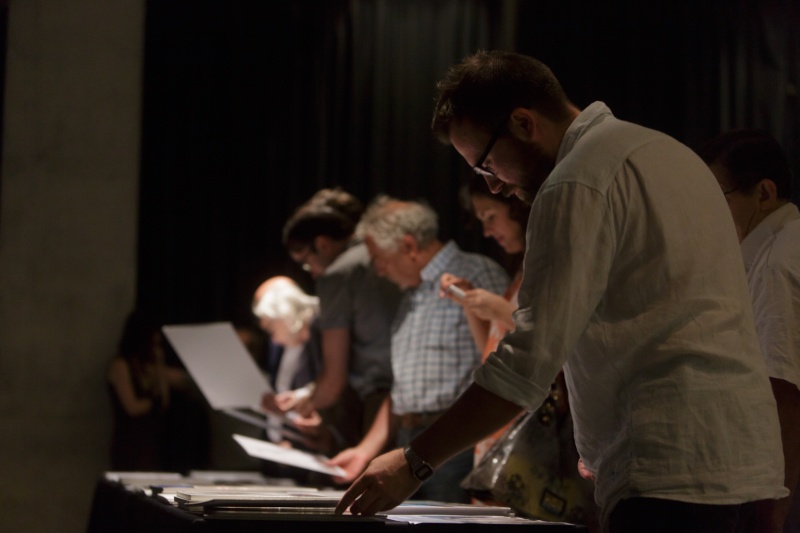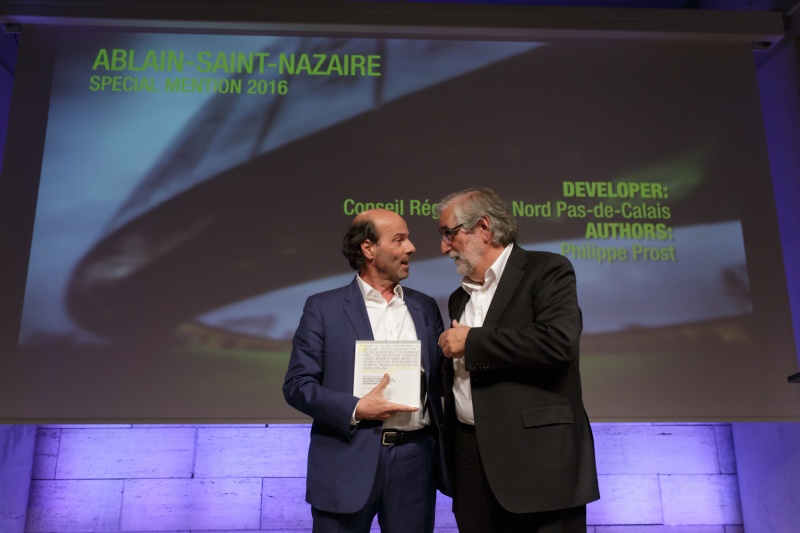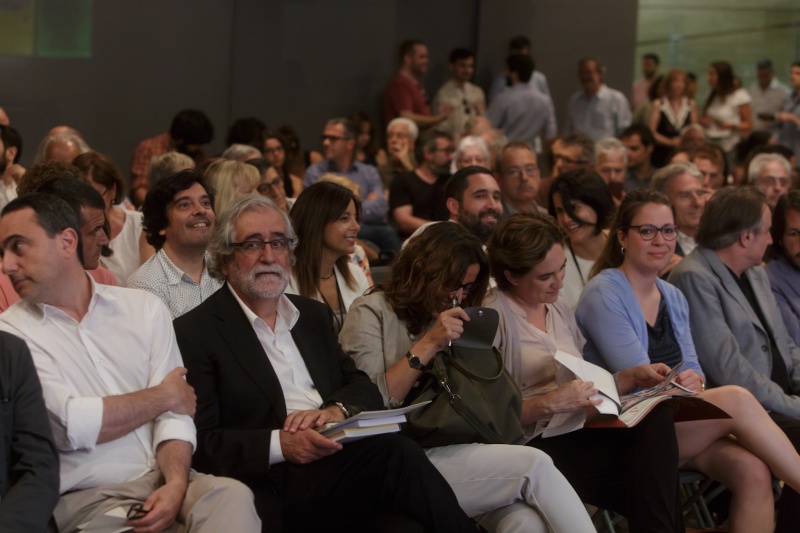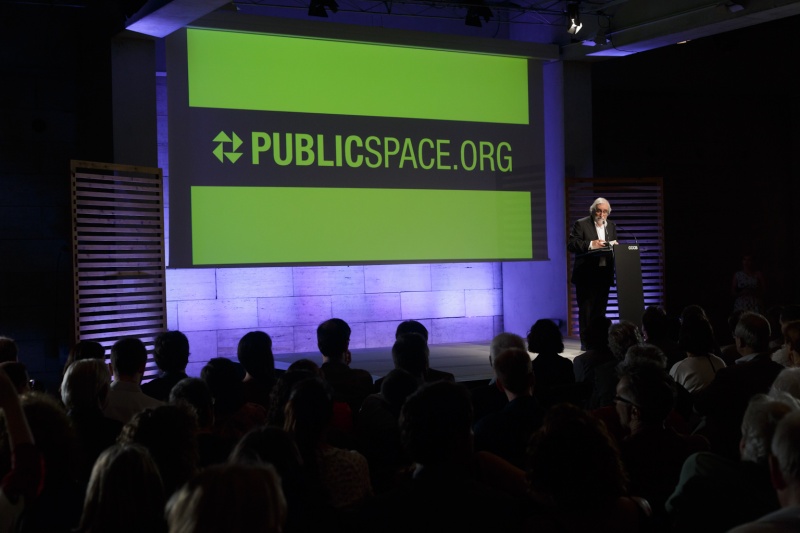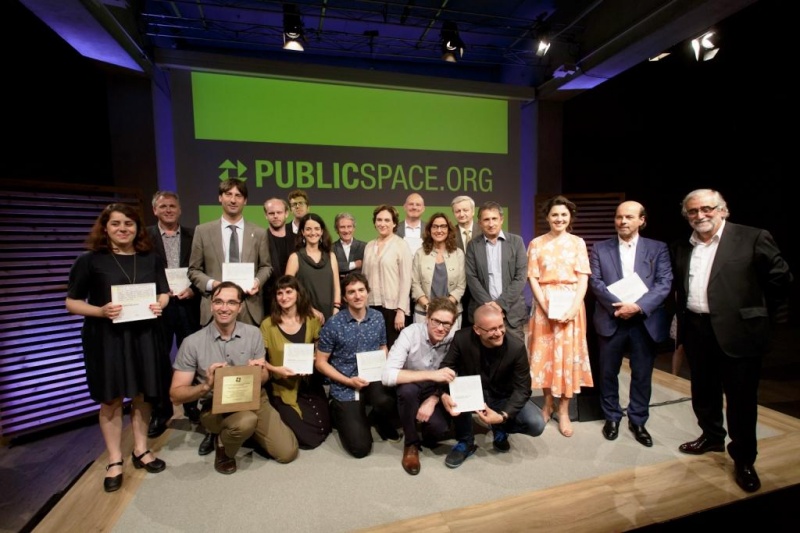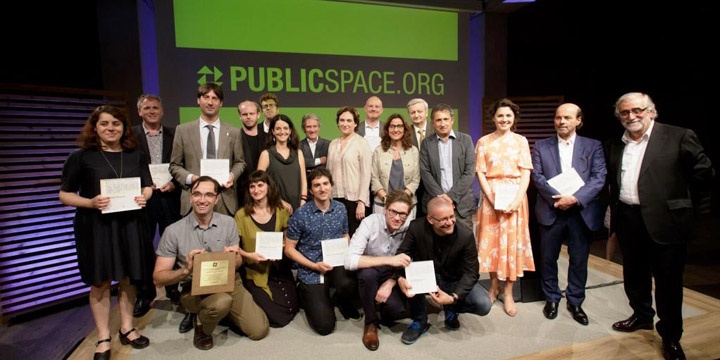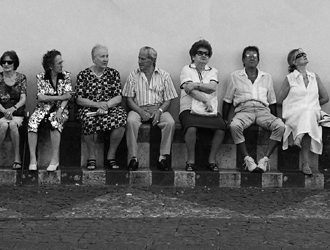The event gathered local and international experts on urban planning, design and architecture as well as public authorities and policy makers in a festive environment to celebrate the new efforts to rethink and design urban public spaces.
The award-giving Ceremony of the European Prize for Urban Public Space 2016 took place on 4 July at the Center of Contemporary Culture of Barcelona (CCCB). The event gathered local and international experts on urban planning, design and architecture as well as public authorities in a festive environment of celebration of the enduring efforts to preserve and invent new public spaces in the urban cores and peripheries of the old European continent.
The ceremony opened with a speech of Vicenç Villatoro, director of the CCCB, who reminded the audience of the conceptual objective of the Prize: to offer a space to collectively think of what kind of city we want. For that the Prize counts on the participation and support of the partner institutions spread throughout Europe: The Archictecture Foundation of London; the Architekturzentrum in Wiena; the Cité de L’Architecture et du Patrimoine in Paris; the Deutsches Architekturmuseum of Frankfurt; the Muzej za Arhitekturo in Oblikovanje of Ljubljana; and the Arkkitehtuurimuseo in Helsinki. Villatoro also made reference to the valuable lessons and archive of experiences that the Prize has been accumulating for over a decade. Such experiences do tell us, through the proposed solutions, the type of social and environmental problems that European cities have been going through since the start of the 21st century.
The mayor of Barcelona, Ada Colau, also made a short address to the audience highlighting the importance of considering the role of design and architecture in improving people’s quality of life. Nevertheless, protecting and designing functional public spaces is not only a technical challenge but also fundamentally political. Public spaces are a key democratic condition for the exchange, the existence of difference and diversity, and the expression of citizenship, a space for the claiming of rights. This is why, beyond being central elements of the public life of European cities, public spaces have become a global democratic value that will be brought and defended in the discussion to be held in Quito next October, in the context of Habitat III. In the words of the mayor, we need to struggle for recovering the essence of public spaces on the face of their current processes of commodification and spectacularization.
After the introductory speeches the ceremony followed with the screening of a video presenting the 25th finalist works out of the 276 submitted candidatures coming from 33 different countries and representing 205 cities. The panels of the 276 submitted works were exhibited and available for consultation in the auditorium where the ceremony was held, and kept the attention of many curious attendees. The 25 finalist works will also be available on the online archive of the Prize.
Following the video, the awards were announced and given to the respective authors. The International Jury decided to award two joint winners and four special mentions. The joint winners of this year’s edition are the Recovery of the Irrigation System at the Thermal Orchards in Caldes de Montbui (Spain); and the Dialogue Centre “Przełomy” at Solidarność Square in Szczecin (Poland). The special mentions were awarded to the projects of the "Ring of Memory": International Memorial of Notre-Dame-de-Lorette in Ablain-Saint-Nazaire (France); the "Heavenly Hundred" Garden in Kiev (Ukraine); the Improvement of Barkingside Town Centre in London (United Kingdom); and the New Multi-Purpose Canopy in Sint-Jans-Molenbeek (Belgium).
Moreover, this year the Jury decided to award, in form of a Special Recognition, the city of Copenhagen. The special award was created after considering the exceptional efforts that the city of Copenhaguen, as an enlightened client, is making to promote the re-conquest of public spaces, particularly in terms of connectivity and sustainable mobility and environmentally sensitive policies. Examples of these are the promotion of the bicycle as a collective means of transportation that is substituting the use of private cars; and the re-naturalization of its urban spaces, particularly with the installation and integration of water collection and recycling systems in the urban fabric.
In a closing speech, the President of the International Jury Enric Batlle shared his impressions on the presented works and pointed out that, precisely, “connectivity” and “re-naturalization” have been the two main values considered on the Jury’s deliberation. Batlle gave a broad and comprehensive overview on the wide range and variety of high quality works that have participated in this year’s edition of the European Prize for Urban Public Space. The works, as reflected also in the results, range from very technical interventions that depend on high budgetary expenses, to bottom-up “protest” interventions that are also characteristic for the voluntary work of citizens and their low economic cost. Overall, as the President confirmed, all of the considered projects reflected a will to improve the livability and habitability of our cities. The ceremony was finally closed by Mercè Conesa, president of the Provincial Authority of Barcelona, who congratulated the Prize, participants and organizers.


